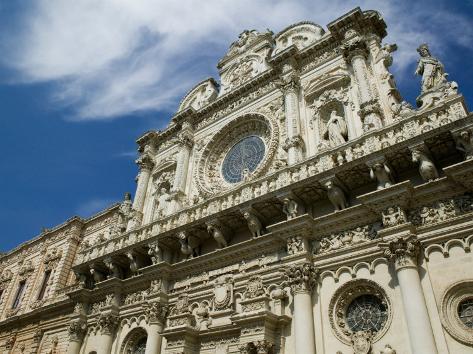JACOBEAN
 |
| Gorgeous mermaid ewer from 1610-1611 |
 |
| Table from 1600 |
Architecture and furniture were very rich in design and materials. In this period, trade was established between Britain and Asia. This meant there was a large Asian influence on design. Furniture was turning into art- wood was carved intricately and turned furniture came into popularity. The Jacobean style featured rich, dark colors and marine motifs.
 |
| The "Old Palace" at Bromley-by-Bow. Room, 1606 |
RESTORATION
 |
| Gilded leather panel, 1670 |
 |
| Table, 1674 |
Curvy forms and elaborate carving characterized the restoration with lots of dancing movement, though symmetry was important. Ornate finishes were very popular and wood was decorated with gold and silver. Spiral shapes were introduced in furniture around this time thanks to the development of the lathe. Flowers, leaves and fruit decorated objects. Specifically, the acanthus leaf was very popular in the Restoration period.
BAROQUE
 |
| Gilded table from the Baroque period |
 |
Veneered cabinet, brass
|
The Baroque style, which originated in Italy, influenced all of Europe in the late 17th century and into the 18th century. Baroque was all about drama, ornateness, and luxury. Plant life dominated decorative motifs with scrolling foliage and garlands in gold. Veneer work was laying thin pieces of luxury woods on furniture and cabinets. Crests and monograms were important in Baroque design to represent status. And don't forget those adorable little chubby babies!
BAROQUE ARCHITECTURE

Baroque architecture is very distinctive and dramatic. Oval forms were utilized, as well as
fragmentary elements on facades of buildings. The outer facade was mostly characterized by a dramatically projected central structure and
domes. Again, opulent decoration of
foliage, fruit, and
baby angels was applied to forms using stucco, wood, and marble. Baroque architects employed a dramatic use of light with
numerous windows.







 Baroque architecture is very distinctive and dramatic. Oval forms were utilized, as well as fragmentary elements on facades of buildings. The outer facade was mostly characterized by a dramatically projected central structure and domes. Again, opulent decoration of foliage, fruit, and baby angels was applied to forms using stucco, wood, and marble. Baroque architects employed a dramatic use of light with numerous windows.
Baroque architecture is very distinctive and dramatic. Oval forms were utilized, as well as fragmentary elements on facades of buildings. The outer facade was mostly characterized by a dramatically projected central structure and domes. Again, opulent decoration of foliage, fruit, and baby angels was applied to forms using stucco, wood, and marble. Baroque architects employed a dramatic use of light with numerous windows.


No comments:
Post a Comment